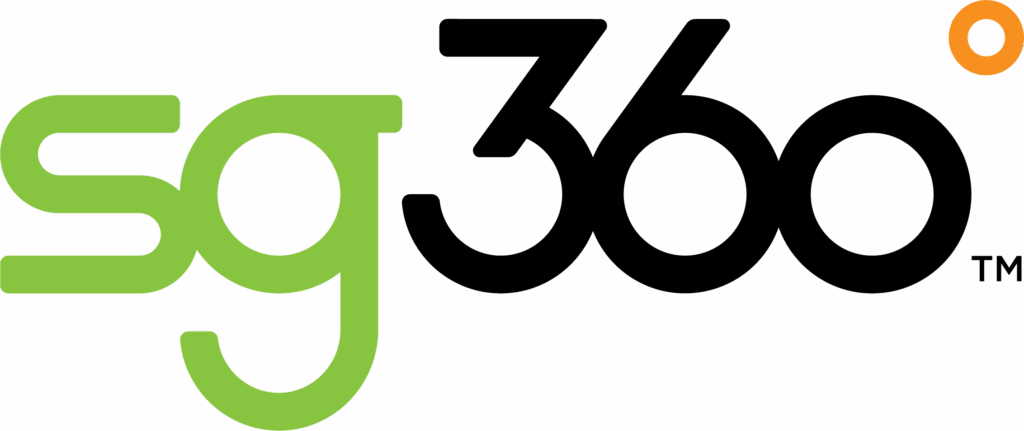In this article, we compare two effective direct mail formats in their cost-efficiency and flexibility to meet your marketing needs; letter-size booklets and flat-size booklets. Both have a particular stickiness, as they typically sit on the coffee table for an extended period of time. Their real estate also allows for the best in brand storytelling to elicit emotion and connection. But there are significant savings to be had by using letter-size booklets.
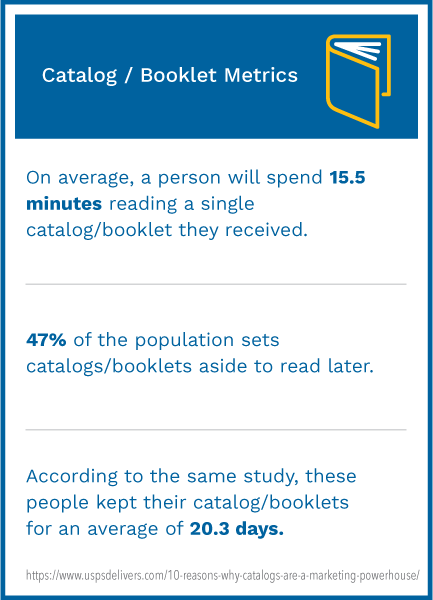
Letter-size versus flat-size
Marketing booklets come in two flavors, letter-sized and flat.
The USPS defines a letter-size booklet as having multiple pages, bound on one side by pasting or stitching. There are various size formats to choose from, with some formats having specific requirements for paper stocks, folding, and closure mechanisms (see USPS Commercial Design Standards, section 3.16.2). Those formats qualify for automation and machinable price reductions, while most everything else up to the allowed maximum sizes fall under flat-rate mailing.
Flat-size allows for more variations in sizes, and must conform to specific flexibility and uniformity standards. While the devil is in the details, a good DTC marketing partner will guide you on the choices that will maximize your return on marketing investment.
Then what is a catalog?
When we refer here to a catalog, we are referring to the USPS definition, since that is what matters most for the cost of postage. Catalogs are defined by their content instead of their physical parameters. To be considered a catalog, a publication must include:
- a listing of products arranged systematically with descriptive images
- product details
- pricing
- information that facilitates ordering, such as a website, order form, and/or phone number
- shipping options
So it is possible for a catalog to be produced as a letter-size booklet so long as it meets the physical requirements. This is an ideal solution for companies not in retail, or with narrower product ranges, versus a brand selling thousands of items.
Marketing booklet ROI
Cost-efficiency of your direct mail production is defined by several things:
- The flexibility to be manufactured across multiple presses
- Paper efficiency, which can cut cost dramatically
- That the format is cost-efficient even in smaller test quantities
- That your mail package architecture is USPS optimized, which means it is designed for the most efficient mailing using paper and sizes best suited for postage savings and minimizing additional features that add expense
Letter-size booklets can fit this criteria well. Switching from a flat to a letter-size marketing booklet, or supplementing larger direct mail catalogs with letter-rate booklets, can be decrease costs for potentially the same or greater response rates. Mailers who send out millions of pieces per mailing could see postage savings in excess of $1M each month they mail by using letter-size booklets.
What’s better, letter-size or flat-size marketing booklets?
It depends on your priorities. The production and postage involved to make letter-size booklets can be less expensive than flat mail.
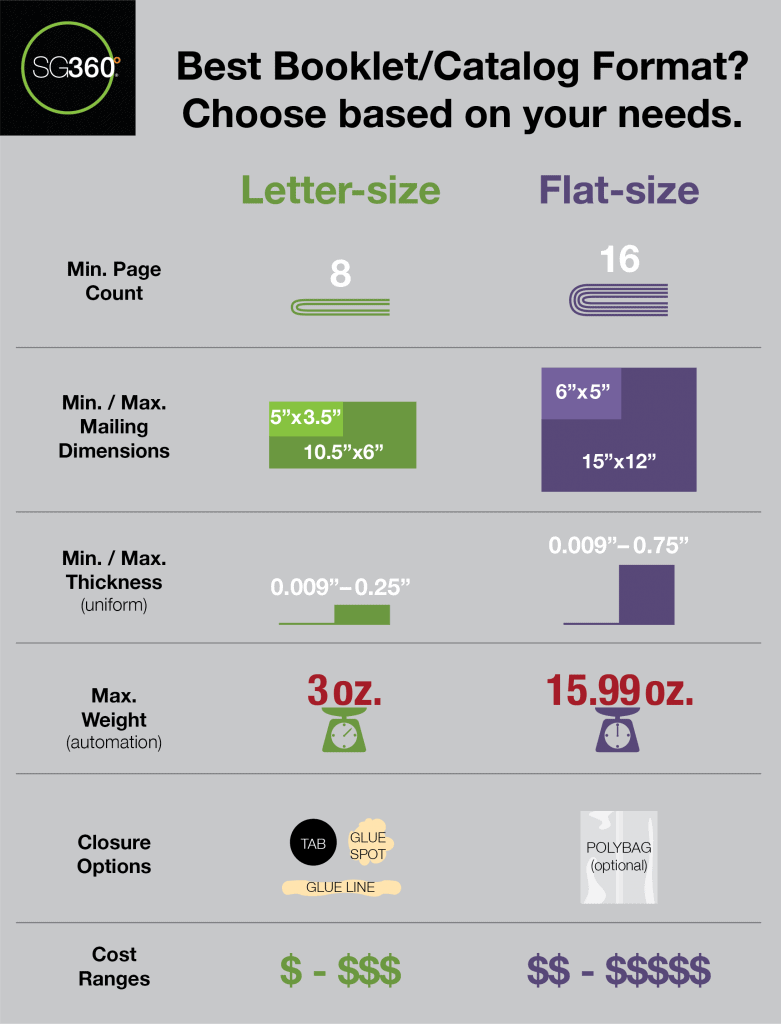
If you sell an extensive line of products, such that your page count makes a letter-size booklet physically impossible, then flat mail is your solution. Or, depending on the goal for your campaign, you may find it increases profitability to replace your flat-size catalogs with letter-size booklets. You’ll also want to consider quantity. Here are some examples:
- Marketing booklets in quantities of two million+ can be cost-efficient up to 32 pages.
- Lower quantities are best at a 24-page maximum.
- Mailing a press-pasted booklet with fugitive glue sealing methods up to 6 x 9.5″ is the best way to save the cost of additional finishing.
Ultimately, your most cost-efficient size and mail-ability will be based on page counts, quantities, and format specifications.
Pasted spine advantages
When comparing pasted-spine to stitched-spine booklets, a couple of important advantages present themselves. Elimination of offline stitching speeds time to market. That reduced cycle time means quicker engagement and orders.
SG360° offers several highly efficient, off-the-shelf formats, or can work with you to design a custom solution.
5 Ready-to-go pasted-spine booklet formats
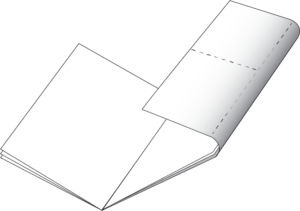
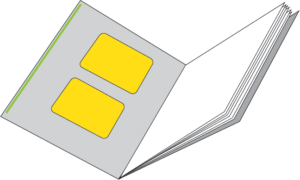

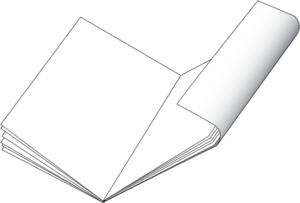

Strategies for the greatest ROI
To maximize the impact of your mailing, re-focus your attention on your offer and your audience selection.
Mitigate rising costs for acquisition by using smaller, more cost-efficient booklets as a prospecting vehicle. In addition, retailers can improve profitability by presenting a select set of products in a thinner product booklet in between seasonal direct mail catalogs. Include only your best-selling items to introduce prospects to your brand to nurture them into a customer. Think about the number of products you showcase relative to the stage in the buying funnel of the receiving audience. This will cost you a fraction of the investment it takes to send a full catalog… only once they have made their first purchase will you send them your full line of offerings.
In addition, a potent strategy to boost results of your campaign is to use sophisticated Audience Insights in order to identify prospects that will likely convert at a higher percentage than other prospects. This effort up front hones your audience and messaging strategy so that in the end, your cost to acquire a new customer is lower.
If you’d like strategic guidance or a quote, contact us to speak to a solutions expert.
